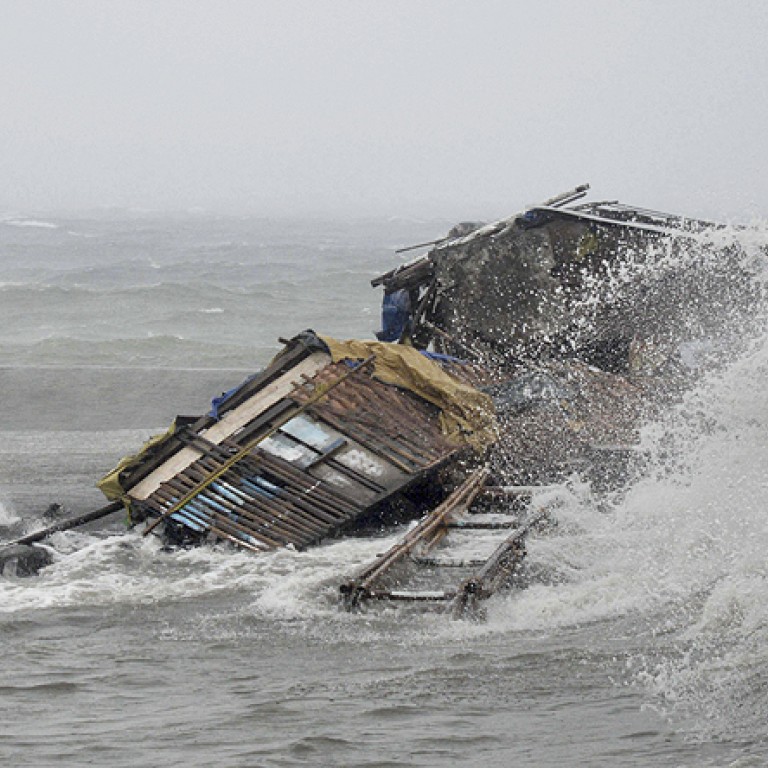
Super typhoon Haiyan forces million to flee their homes in Philippines
Widespread casualties feared as 'humanitarian impact of Haiyan threatens to be colossal'
The strongest typhoon in the world this year and possibly the most powerful ever to hit land smashed into the Philippines yesterday, forcing more than a million people to flee, flooding villages and raising fears of widespread casualties.

At least three people were killed and seven injured, national disaster agency spokesman Rey Balido said in Manila. The death was expected to rise.
"The humanitarian impact of Haiyan threatens to be colossal," said Patrick Fuller, spokesman for the International Federation of Red Cross and the Red Crescent Societies.
Power and communications in the three large islands of Samar, Leyte and Bohol were almost completely down but authorities promised to restore them within 24 hours.
Officials warned that more than 12 million people were at risk, including the residents of Cebu City, which has a population of about 2.5 million, and areas still reeling from a deadly 2011 storm and a 7.2-magnitude quake last month.
"The super typhoon likely made landfall with winds near 195 mph (313km/h). This makes Haiyan the strongest tropical cyclone on record to make landfall," said Jeff Masters, the director of meteorology at US-based Weather Underground.
Video: Super Typhoon Haiyan makes landfall in the Philippines
About a million people took shelter in 29 provinces, after President Benigno Aquino appealed to people in Haiyan's path to leave vulnerable areas, such as river banks, coastal villages and mountain slopes.
"Our school is now packed with evacuees," an elementary school teacher in Southern Leyte, who gave her name only as Feliza, told a radio station. Leyte and Southern Leyte are about 630 kilometres southeast of Manila.
Energy Secretary Jericho Petilla reported a three-metre flood in one village in Leyte. "There is zero communication at the moment," he told ANC television.
"Roads are still impassable. There are some landslides," said Roger Mercado, governor of Southern Leyte province. More than 100 coastal homes were flattened, while landslides destroyed houses in the hills, but his province had seen no casualties yet.
Authorities suspended ferry services and fishing and shut down 13 airports.
Video: How typhoons are formed
Twenty navy ships and military aircraft including three C-130 cargo planes and helicopters were on standby.
The state weather bureau said Haiyan was expected to move past the Philippines today and out over the South China Sea, where it could strengthen. Haiyan is the second category-5 typhoon to hit the Philippines this year after Usagi in September.

